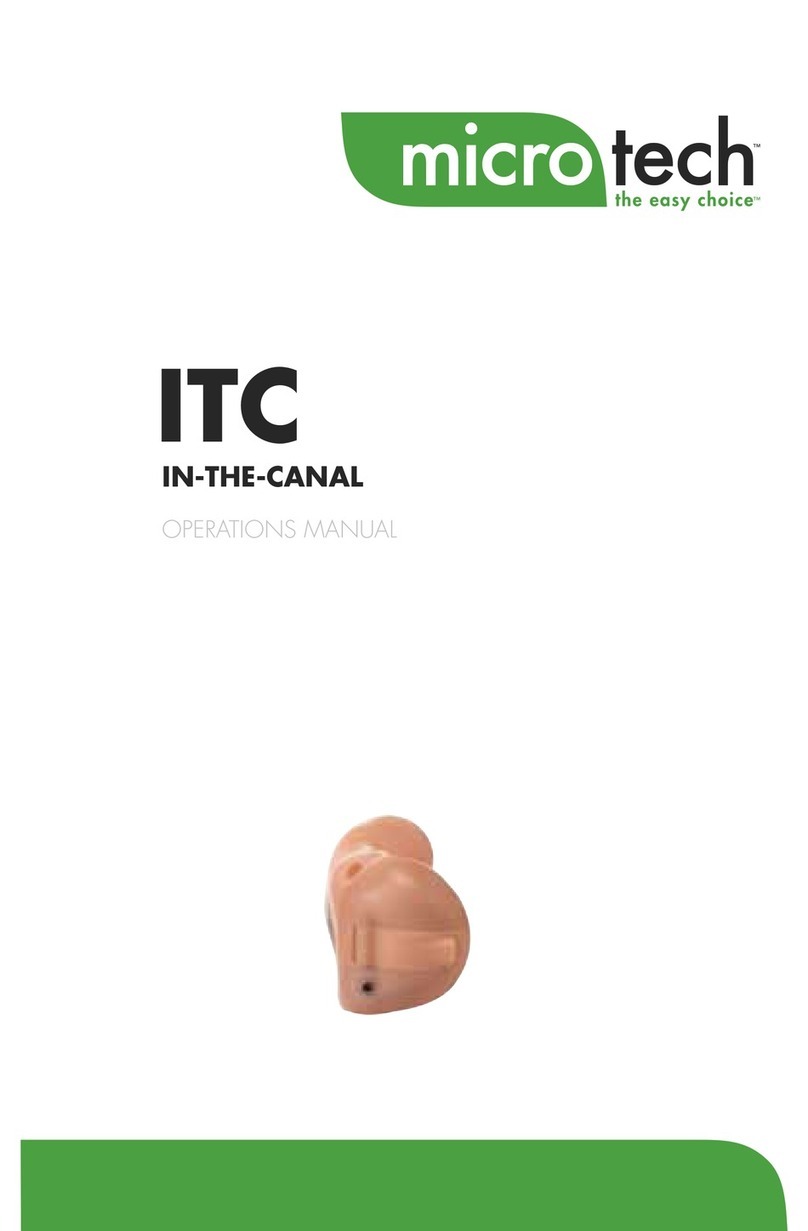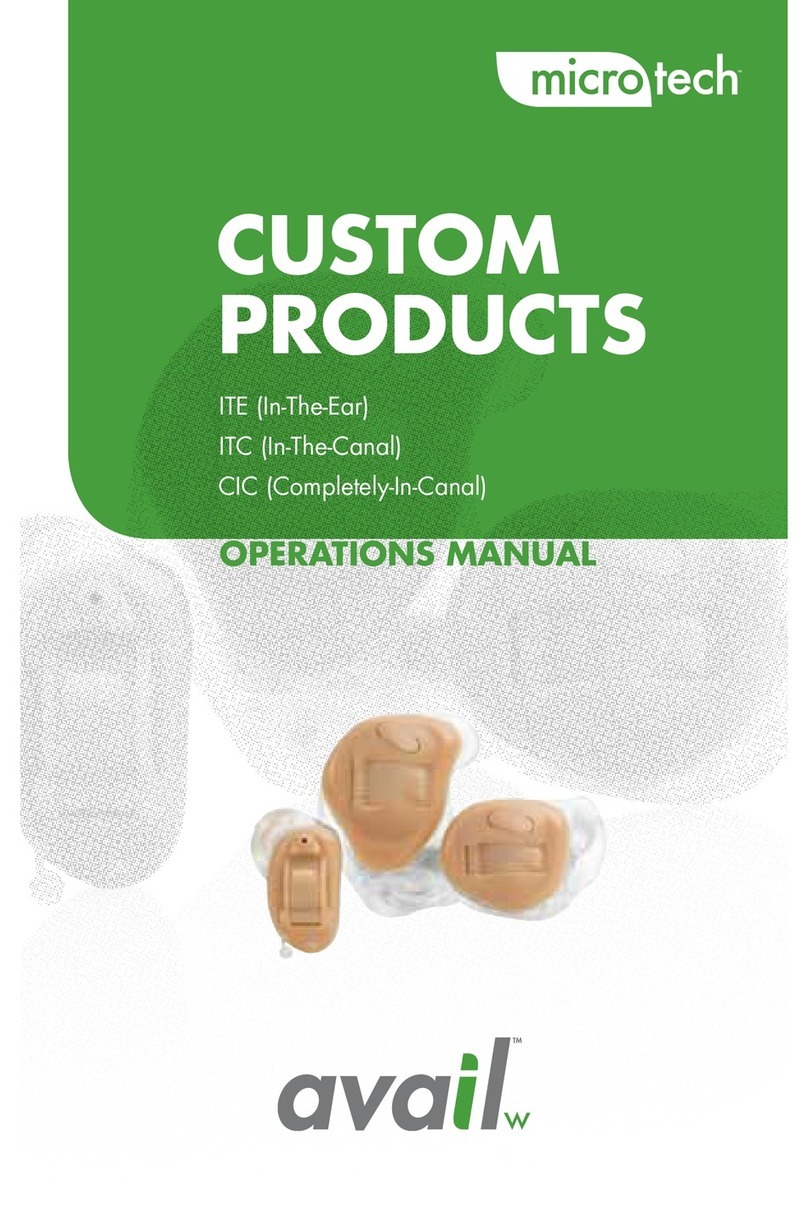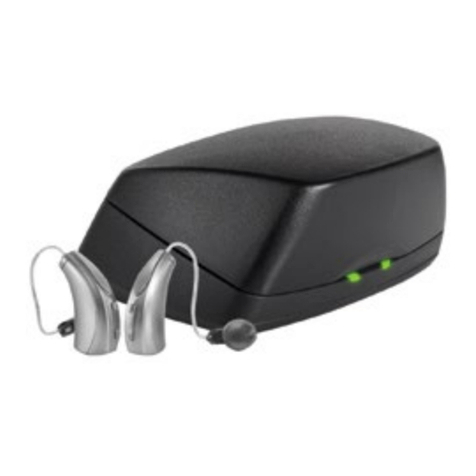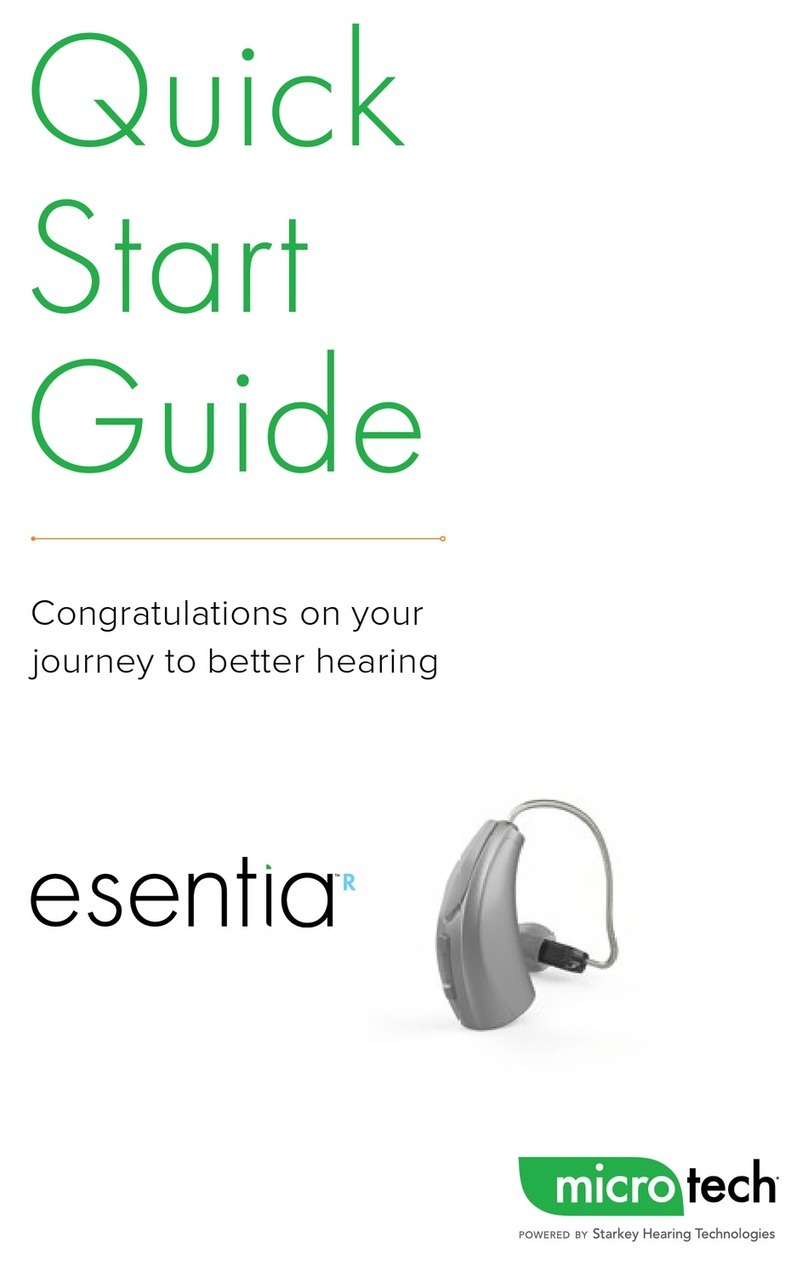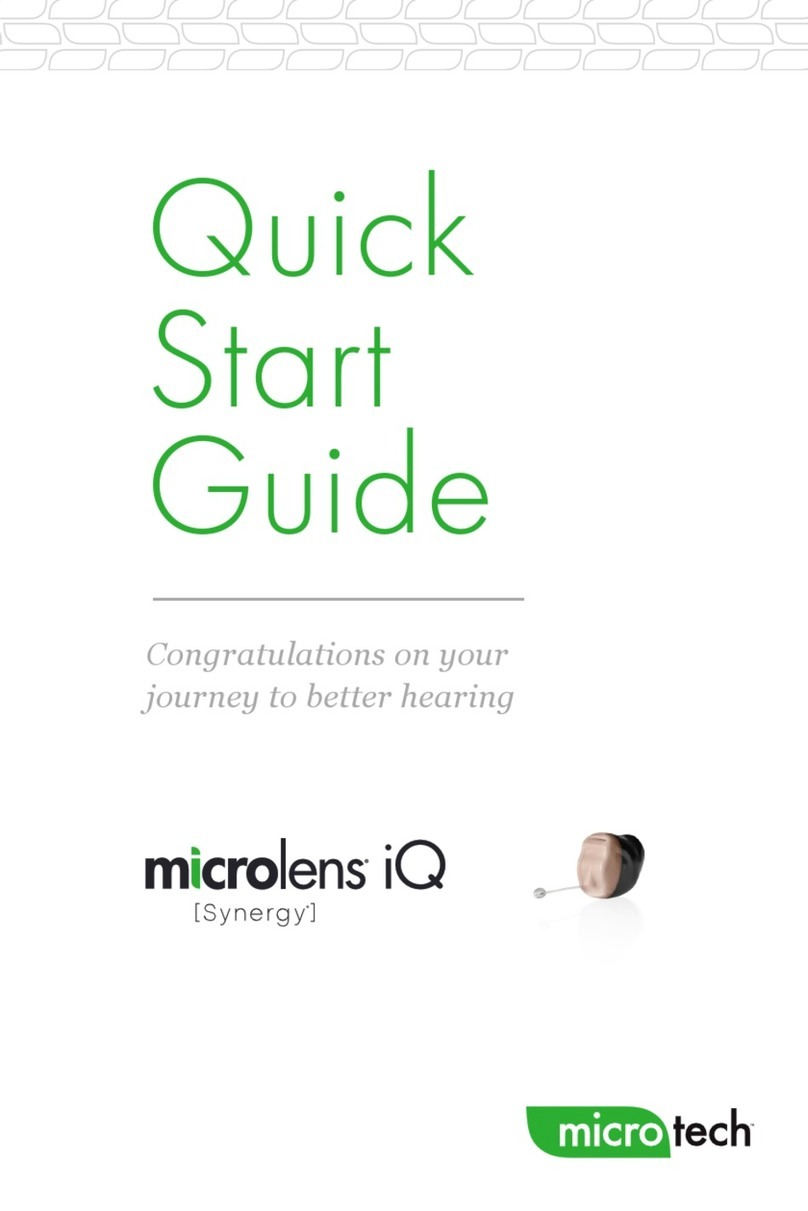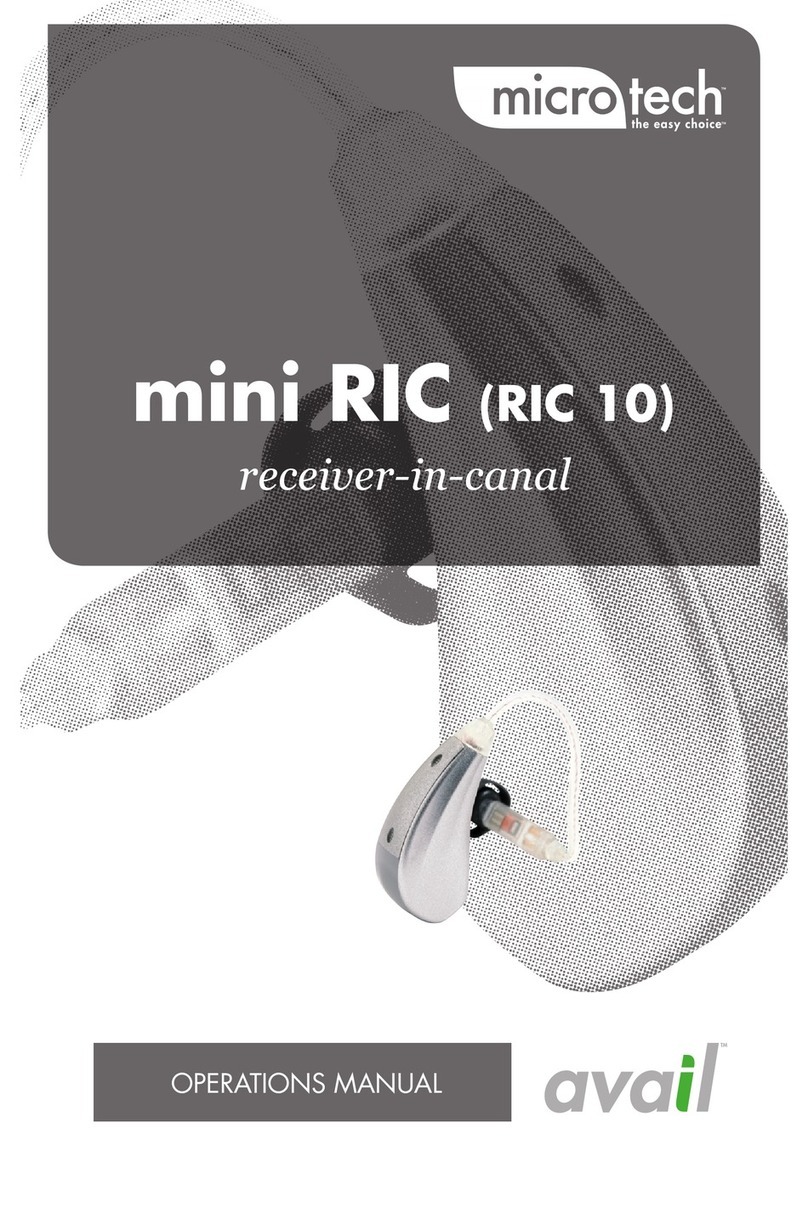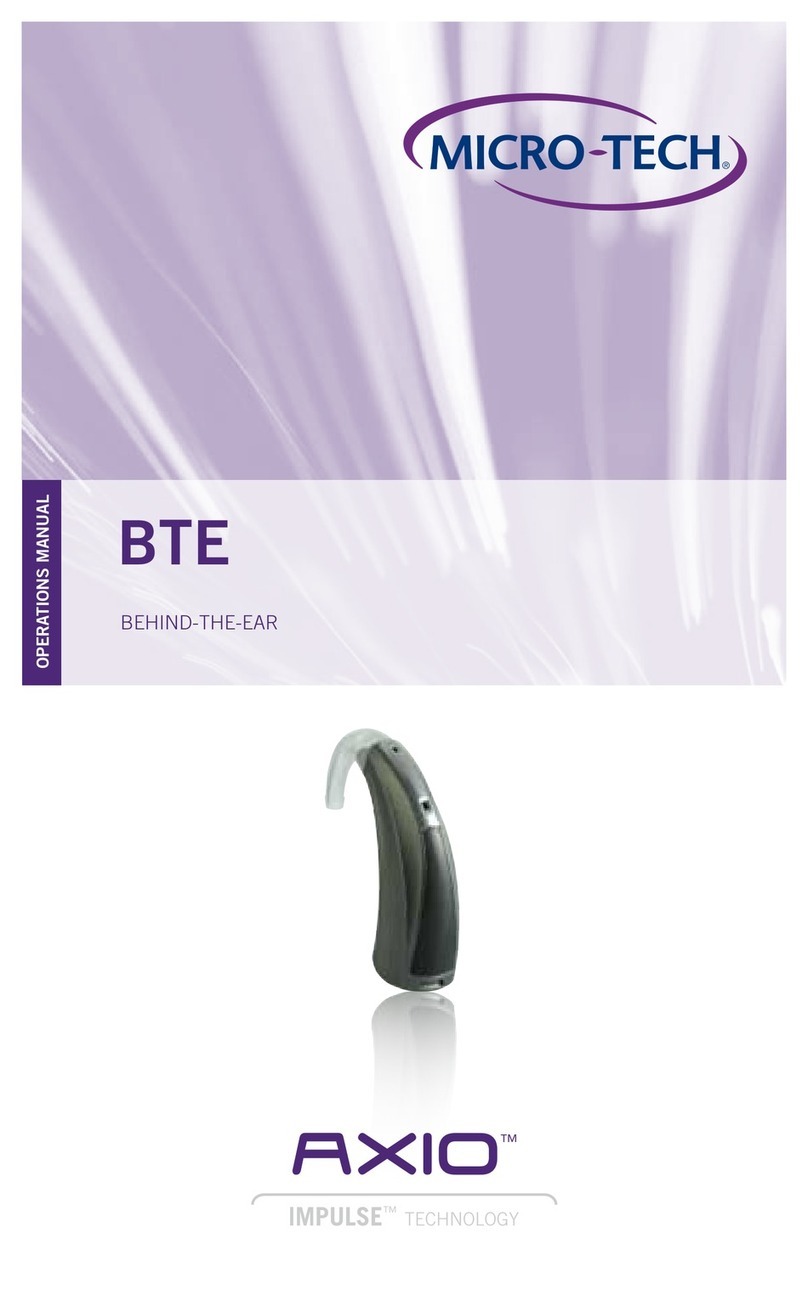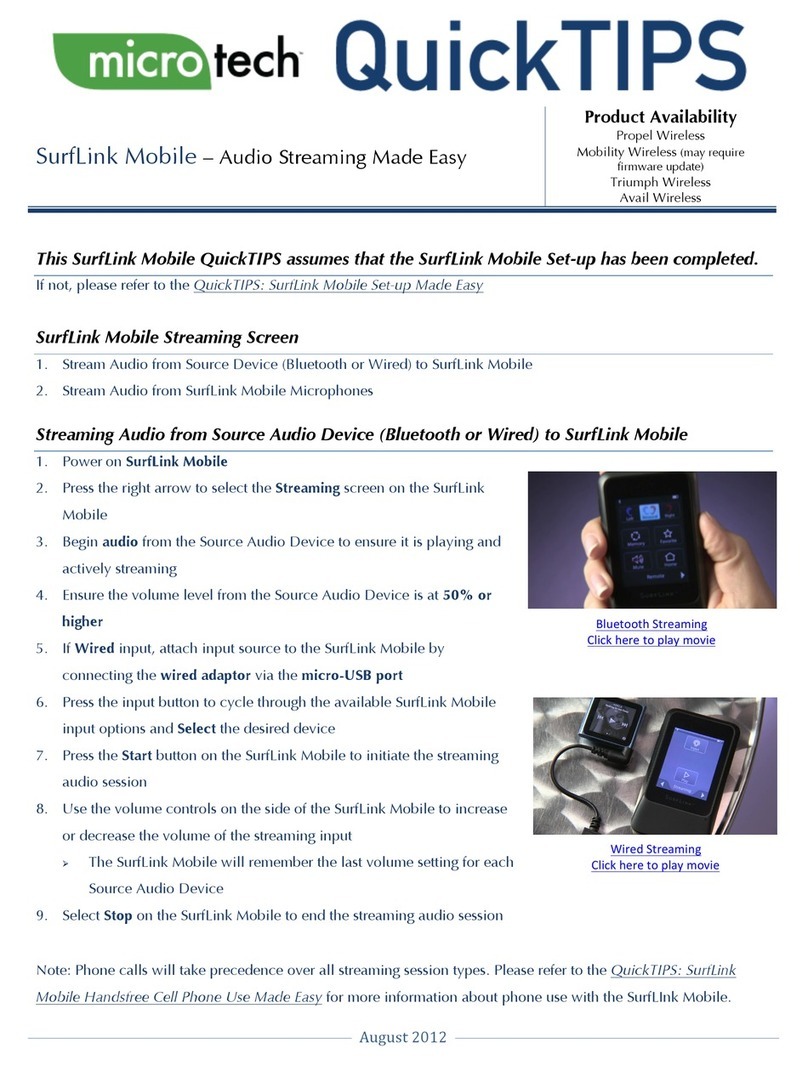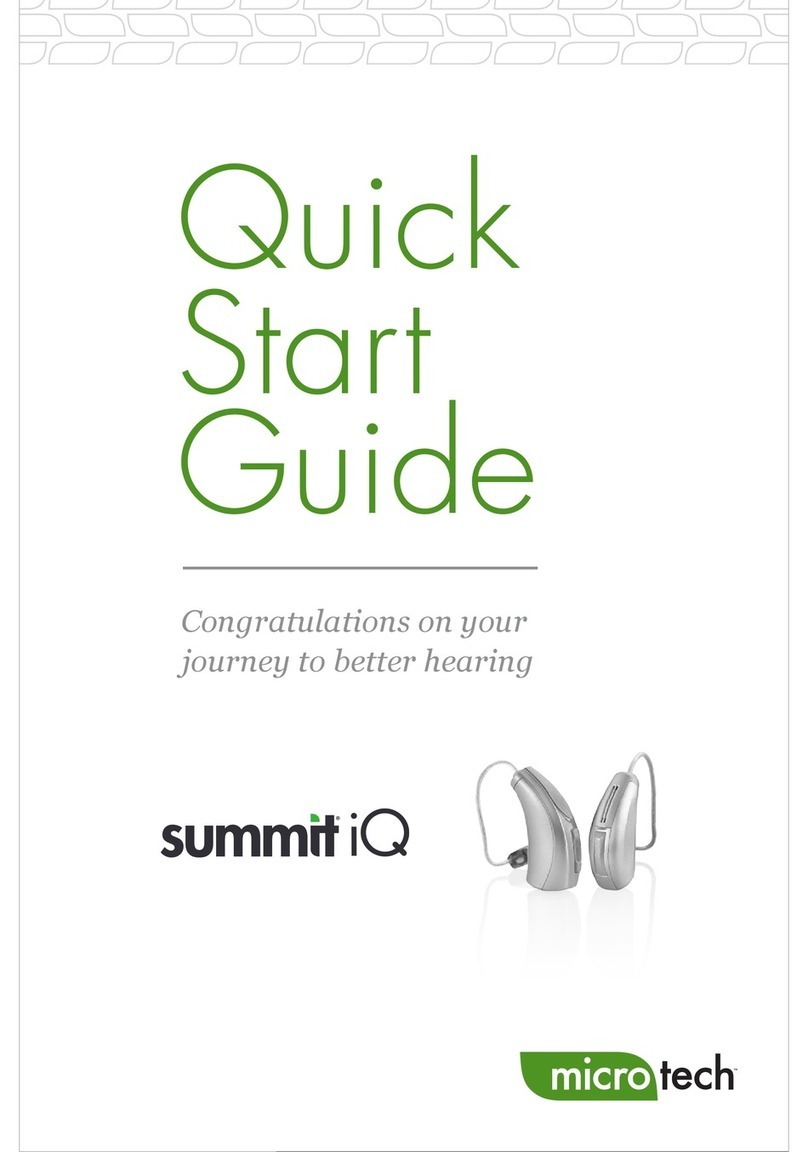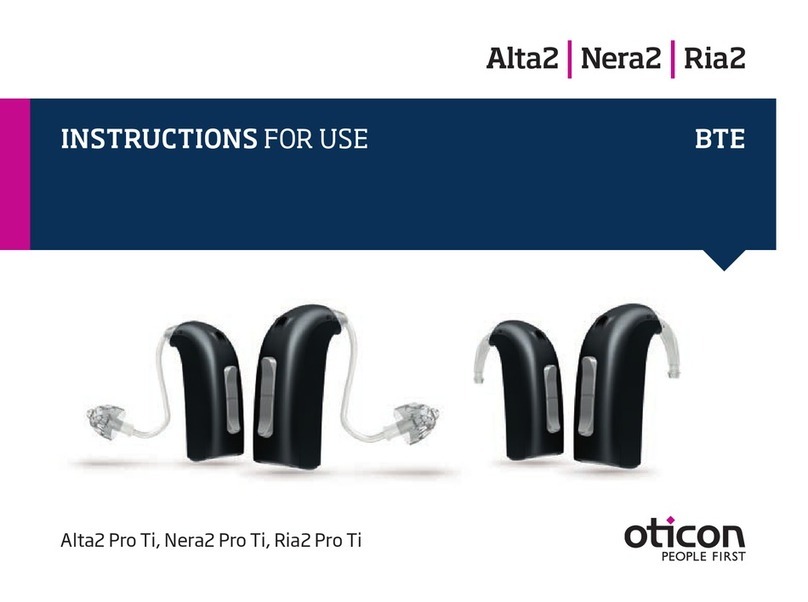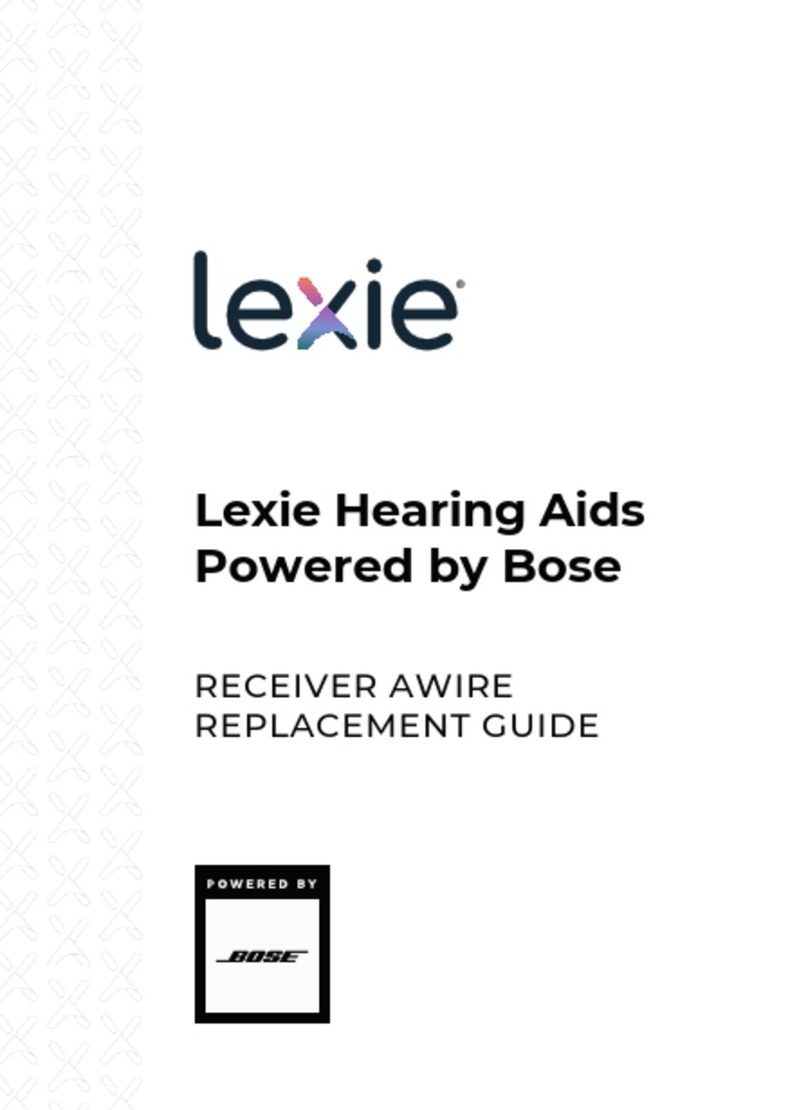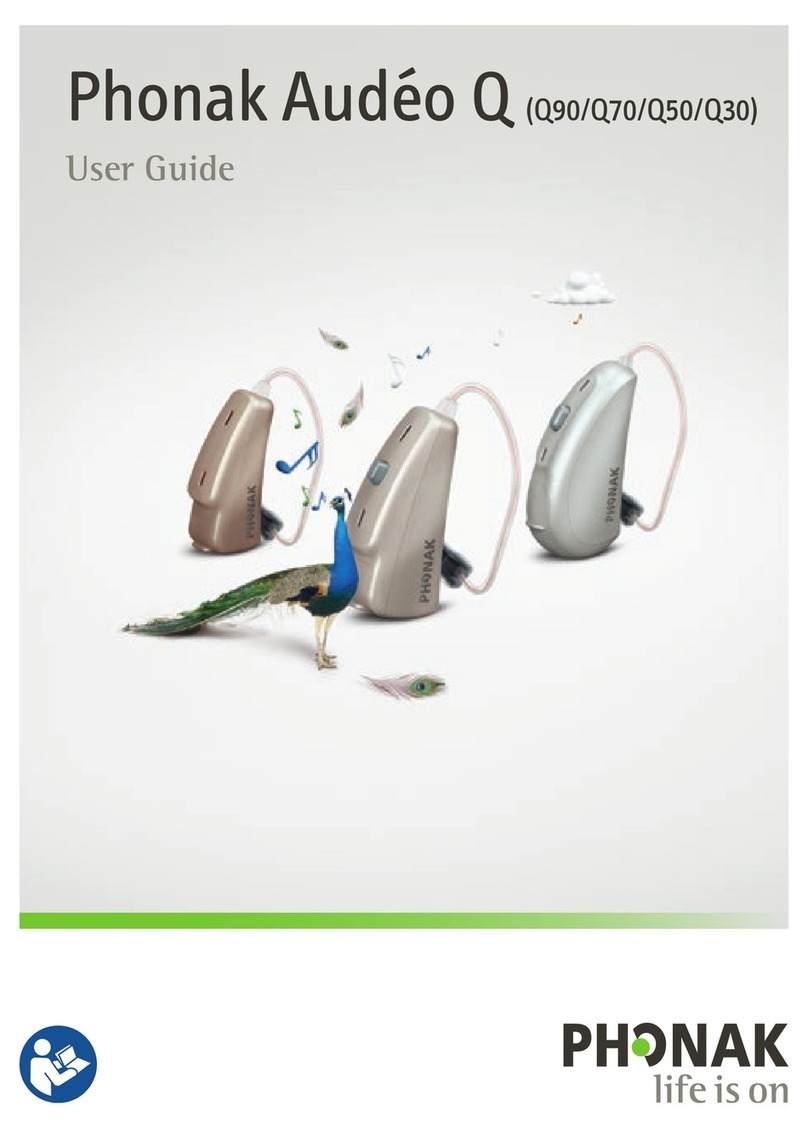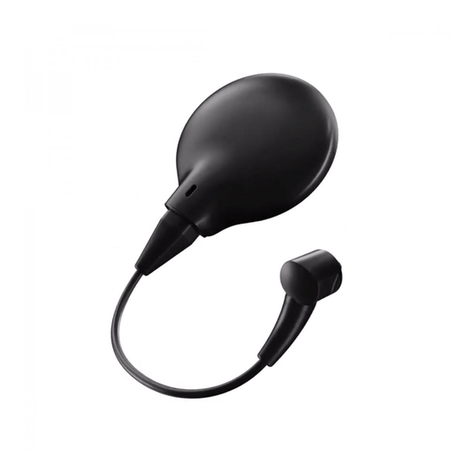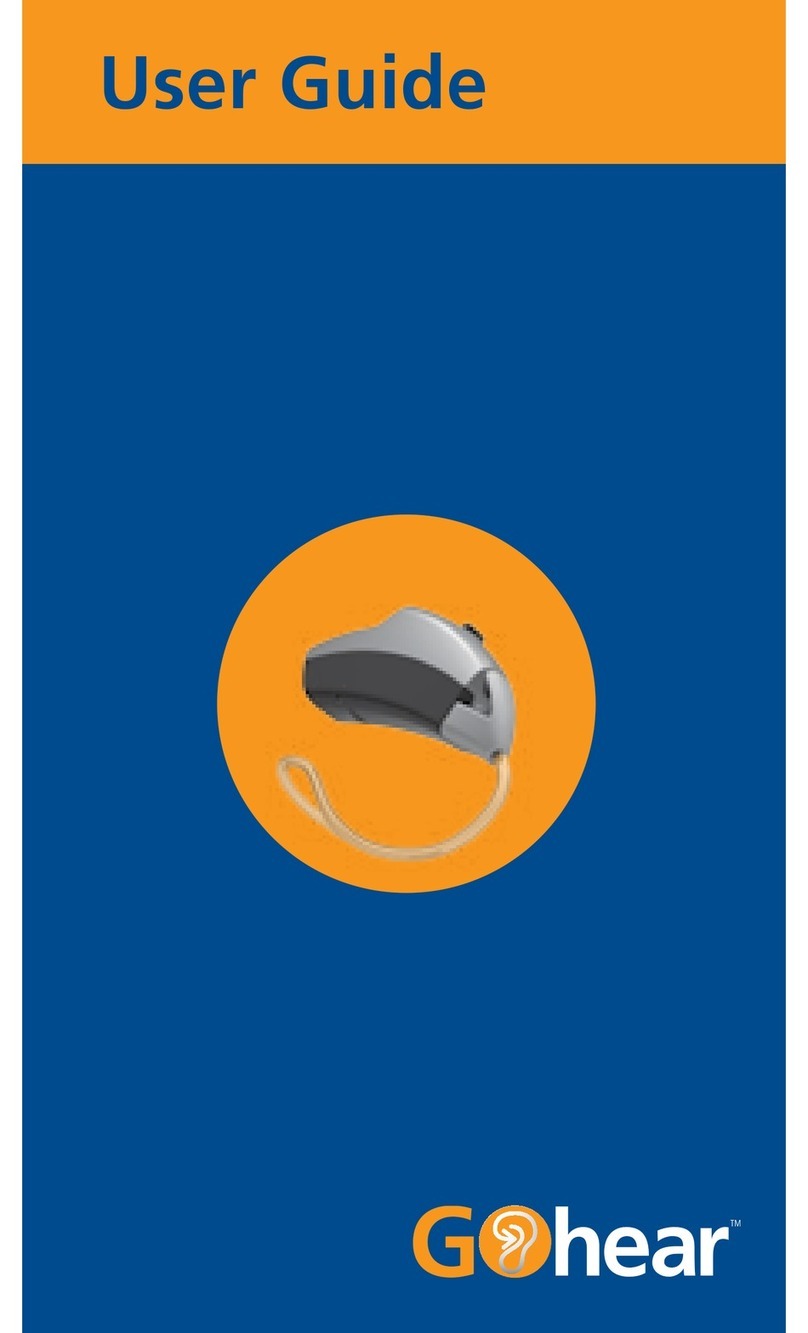14 15
Operation
General Telephone Use
Some hearing instruments work best
by holding the phone close to, but
not fully covering your ear. In some
instances, if you encounter whistling
(feedback), tilt the receiver at an
angle until the whistling stops. Your
hearing professional can provide
instructions and techniques for your
specific needs.
DISCLAIMER – Some hearing aid
users have reported a buzzing sound in their hearing
aids when they are using cell phones, indicating
that the cell phone and hearing aid may not be
compatible. According to the ANSI C63.19 standard
(ANSI C63.19-2006 American National Standard
Methods of Measurement of Compatibility Between
Wireless Communications Devices and Hearing Aids),
the compatibility of a particular hearing aid and cell
phone can be predicted by adding the rating for
the hearing aid immunity to the rating for the cell
phone emissions. For example, the sum of a hearing
aid rating of 2 (M2/T2) and a telephone rating of 3
(M3/T3) would result in a combined rating of 5. Any
combined rating that equals at least 5 would provide
“normal use”; a combined rating of 6 or greater
would indicate “excellent performance.”
Operation
Telephone Use
Your hearing instruments are equipped with tools
to help you effectively communicate on the
telephone. Your hearing professional will check the
box/boxes that represent the telephone settings in
your instruments.
My hearing instruments have the following
telephone setting(s):
A beep or indicator tone is enabled on my
instruments to signal when the device switches
to the telephone setting.
